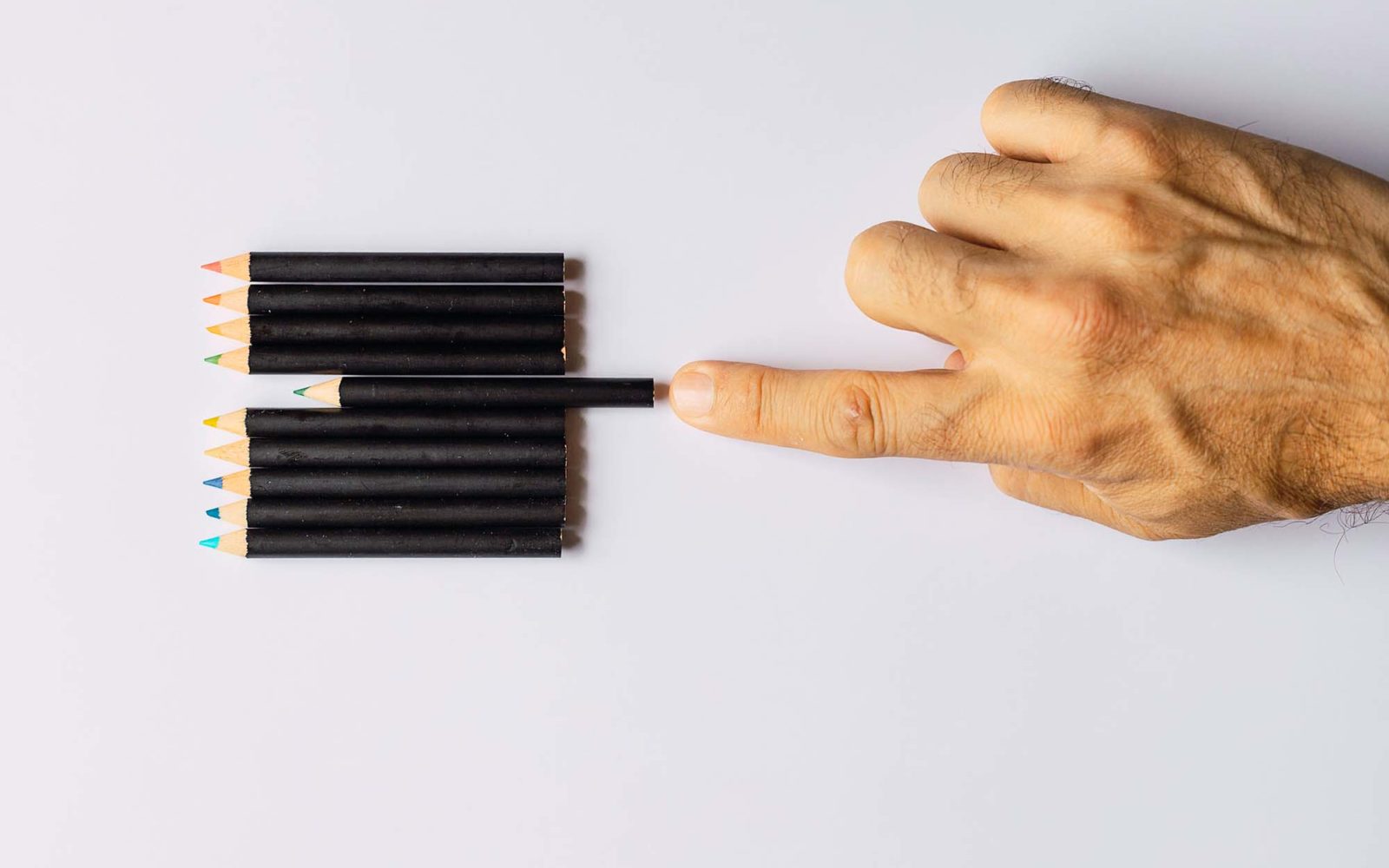Exposure Therapy Challenges Patient Expectations
Exposure therapy can help patients conquer their fears, but it isn’t effective for everyone. Researchers are exploring how this powerful intervention works and how it could benefit a wider range of patients.

- During exposure therapy, patients face their fears to build new, positive associations with situations they find threatening.
- Researchers may need to integrate competing theories of how exposure therapy works—including the inhibitory learning theory, the emotional processing theory, and the self-efficacy theory—to achieve better treatment outcomes for patients.
- Exposure therapy helps patients challenge their expectations about potential threats, but people learn from the process at different rates, which could partially explain why some patients benefit more from this intervention than others.
- Children with anxiety may benefit more from exposure therapy when their parents receive training on how to support their children.
- Exposure therapy appears to be equally effective when provided through virtual reality devices, but the mechanisms behind this may differ from real-world exposure because there is no real risk of patients’ fears occurring.
Relearning what to expect • Helping kids overcome their fears • VR offers fake threats, real relief
Exposure therapy challenges patients with conditions like anxiety, obsessive compulsive disorder (OCD), and post-traumatic stress disorder (PTSD) to conquer their fears by facing them head on. For a person with social anxiety, an exposure exercise could take the form of giving a short speech, whereas a person with OCD might be tasked with resisting the compulsion to repeatedly check if the door is locked before going to bed. In each of these cases, research has shown that patients can reap life-changing rewards from engaging in exposure therapy, and that this seemingly simple intervention can more effectively reduce anxiety than other forms of psychotherapy and some medications, wrote clinical psychologist Kristen Benito (Brown University) and colleagues in their 2024 Clinical Psychological Science article.
Nonetheless, there remains a significant segment of patients for whom exposure therapy just doesn’t do the trick. Just under 50% of patients have a clinically significant reduction in anxiety after receiving exposure-based cognitive behavioral therapy (CBT), Benito and colleagues explained. Patients’ symptoms may also reemerge over time. For example, the researchers add, only 61% of children remain in remission for OCD 7 to 9 years after treatment, and just 20% to 50% of adolescents continue to experience remission of anxiety, OCD, or PTSD 6 years after completing treatment.
“The last 10–15 years have seen some exciting advances in our understanding of exposure therapy mechanisms,” Benito said in an interview with the Observer. “However, this has not consistently translated into better clinical treatments.”
Currently, most research frames the various theories about what makes exposure therapy effective—such as challenging patients’ expectations, encouraging habituation, and increasing self-efficacy—as competitors, Benito said, which may obscure how these mechanisms work together to produce treatment outcomes.
“A more comprehensive, integrated theoretical conceptualization is needed to account for shared core features across existing theories—and will aid in accelerating optimization research with the greatest potential to produce clinical gains,” Benito and colleagues wrote.
Understanding how exposure therapy works could help researchers design more effective, streamlined treatments by identifying the most powerful elements of an intervention, as well as which elements may be most effective for individual patients and clinical contexts, Benito said.
Relearning what to expect
Psychotherapist Andre Pittig (Friedrich–Alexander University Erlangen–Nürnberg) and colleagues studied how exposure can help change peoples’ beliefs by taking a second look at data from an existing study of 605 German patients. The patients, who varied in age from 15 to 70, had been diagnosed with one or more severe anxiety disorders, including social anxiety disorder, panic disorder, agoraphobia, or a phobia.
Throughout the 2023 study, which was published in Clinical Psychological Science, patients participated in 14 sessions of exposure-based CBT. During the first four sessions, patients worked with a therapist to develop a personalized treatment plan for their anxiety-causing beliefs. The next eight sessions involved a mix of therapist-guided exposure therapy paired with self-guided exposure exercises that patients were assigned to complete by themselves between sessions. Finally, patients attended two additional therapy sessions 2 and 4 months after their last therapist-guided exposure appointment to encourage them to continue completing self-guided exposure exercises.
Each exposure exercise was developed collaboratively by the patient and their therapist to target a specific threat belief with a testable outcome. For example, Pittig and colleagues wrote, a patient with social anxiety who fears that they will panic while riding the bus might complete an exposure exercise that involves taking a crowded bus without using their phone to distract themself. The goal of this exercise might be to test the concrete outcome “I will get a heart attack and die,” but not an emotional response like “I will be very anxious,” or an untestable outcome like “something bad will happen.”
Before beginning each exercise, patients rated how threatening they anticipated the exercise would be on a scale of 0 to 100%, as well as the perceived probability that their feared outcome occur during the exercise. After completing the exposure, they then reported the actual severity of the threat on a scale of 0 to 100% and how threatening they now believed a similar experience would be in the future.
Each patient and clinician pair also completed measures of the participants’ anxiety symptoms before and after treatment.
Through this analysis, the researchers found that 97.4% of patients reported a reduced threat expectancy after each exposure exercise. On average, patients reported that these exercises were 71% less threatening than they expected them to be. This mismatch between the feared and actual outcome of an exposure exercise led to an average expectancy change of 48% for future encounters, indicating that participants expected future encounters to be far less threatening.
This suggests that about two thirds of patients’ unmet expectations were carried over into expectancy change, with patients demonstrating an average learning rate of 65%. There appear to be significant individual differences in the rate at which people learn from expectancy violation, a term that describes when something happens that is different from what is expected, Pittig and colleagues noted: A quarter of patients had a learning rate below 50%, while another quarter had a learning rate of more than 83%. Patients’ learning rates could vary owing to a variety of factors that should be explored in future research, including the type of exposure, comorbid conditions, and individual traits, the researchers wrote.
Crucially, though expectancy violation alone had no relationship to patient outcomes, patients with greater expectancy change and higher learning rates had the largest reduction in anxiety symptoms after receiving the full course of exposure therapy.
“Expectancy violation, change, and learning rate substantially varied between patients. Not expectancy violation itself, but higher learning rate and expectancy change predicted better treatment outcome,” Pittig and colleagues wrote. “Successful exposure thus requires expectancy violation to induce actual expectancy change, supporting learning from prediction error as a transdiagnostic mechanism underlying successful exposure therapy.”
Additionally, Pittig and colleagues found that patients reported higher expectancy violation and change, and lower threat occurrence, in response to therapist-guided versus self-guided exposures. This suggests that patients should complete exposure exercises with their therapist during therapy sessions, not just as homework between sessions, to receive the maximum benefit from this intervention, the researchers wrote.
Although expectancy violation does not have a one-to-one relationship with expectancy change and symptoms reduction, these findings reinforce the effectiveness of exposure therapy, the researchers wrote.
“Given that most patients suffered from their anxiety disorder for several years (on average, 13 to 14 years) and thereby most likely held their individual threat beliefs for several years, exposure-based CBT can be seen as highly effective in changing individual threat expectancies in session,” Pittig and colleagues concluded.
Helping kids overcome their fears
For children with anxiety disorders, parental involvement is another factor that can influence the effectiveness of exposure therapy. Through a Clinical Psychological Science study of 254 young people ages 7 to 16, clinical child psychologist Wendy K. Silverman (Yale University School of Medicine) and colleagues found that the benefits of parental involvement in exposure-based CBT varied depending on which parenting behaviors were targeted by the intervention.
Listen to our podcast episode on parental engagement with Wendy Silverman.
Parents began the study by self-reporting the perceived severity of their child’s anxiety symptoms and their own levels of four types of parenting behaviors. These included two behaviors that have been found to contribute to childhood anxiety: negative reinforcement, such as allowing a child to avoid fear-inducing situations, and psychological control, such as attempts to limit a child’s autonomy by controlling their thoughts and feelings. The parenting behaviors also included two behaviors that are associated with reducing childhood anxiety: parental acceptance, including emotional support, and positive reinforcement in the form of offering praise and rewards for facing anxiety-inducing situations.
Parents and their children were then split into three groups. One group received CBT with parental training on how to increase positive and decrease negative reinforcement, a second group received CBT with parental relationship training about increasing acceptance and reducing parental control, and a third group received CBT without any parental training. Although the children in all three groups received 12 to 14 weeks of CBT, including exposure therapy targeting their fears, those in the CBT reinforcement and relationship groups attended each therapy session with one of their parents and those in the CBT-only group attended sessions alone.
After their children completed treatment, parents who began the study with high negative reinforcement reported that their children benefited more from CBT when their parents received reinforcement training, and those who began the study with a high rate of parental acceptance reported that their children benefited more from CBT when their parents received relationship training. Parents’ levels of psychological control and positive reinforcement behaviors did not interact with either treatment type, indicating that these parenting behaviors were not relevant to determining which treatment type would be effective for a child.
This suggests that while parental involvement may not always enhance children’s treatment outcomes, in some cases those outcomes could be improved by using CBT that targets certain parent behaviors, the researchers wrote.
“These data highlight the importance of assessing parent behaviors before treatment and carefully considering how these behaviors may interact with treatment types to influence child anxiety outcomes,” Silverman said in an interview with the Observer.
Given that CBT is currently only effective for about 50% of children with anxiety, these findings represent an important step toward precision treatment for this condition, Silverman and colleagues wrote.
VR offers fake threats, real relief
Virtual reality (VR) offers another avenue through which to pursue exposure therapy. Patients and practitioners are sometimes hesitant to conduct exposure therapy in real-world settings, wrote clinical psychologist Sara Scheveneels (KU Leuven and Maastricht University), APS Fellow Iris Engelhard, and Katharina Meyerbröker (Utrecht University) in a 2024 Clinical Psychological Science article. This could be due to patients’ reluctance to confront a fear in person or practitioners’ concerns about how patients could be retraumatized by exposure exercises, which could cause them to end treatment early. Fortunately, research has shown that virtual-reality-based exposure therapy (VRET) is often just as effective for patients as confronting a threat in the real world, though research on how exactly VRET helps alleviate anxiety is still ongoing.
“Research on VRET so far has mainly focused on verifying its effectiveness, and the underlying working mechanisms are still considered a black box,” explained Scheveneels, Engelhard, and Meyerbröker. “It remains unclear whether knowledge and findings about in vivo exposure can be transferred to VR exposure and vice versa.”
Though expectancy violation contributes to the effectiveness of real-world exposure therapy, inhibitory-learning theory is unlikely to explain the effectiveness of VRET because patients are not exposed to real risks, the researchers wrote.
In traditional exposure therapy, inhibitory-learning theory suggests that a patient could challenge their fear of flying, for example, by taking a flight to prove to themself that they will not die in a plane crash. This expectancy violation—in this case, the mismatch between the feared crash and the reality of safely landing at the next airport—allows the patient to inhibit their original association between flying and death by learning a new, contradictory, association between flying and safety.
“Because of the simulated nature of VR, some feared outcomes cannot occur, and therefore, possibilities to violate expectancies about their occurrence may be compromised,” Scheveneels and colleagues explained.
It’s reasonable to assume that expectancy violation could not occur with VRET because there is no real risk of crashing during a VR flight, but right now this is just an assumption, Scheveneels and colleagues wrote. Researchers are still learning about how VRET works and are yet to compare how expectancy violation may function differently during VRET and in-person exposure therapy. It’s possible, the researchers noted, that though virtual reality poses no physical threat to patients, patients’ own emotional and behavioral reaction to the visual simulation could be enough to violate their expectations about a threat.
Emotional-processing theory, which posits that exposure therapy allows people to habituate to potential threats by altering their fear memories, may be a better fit for VRET, Scheveneels and colleagues suggested. Even though patients know that a threat depicted in virtual reality isn’t real, research suggests that VRET still activates the fear and anxiety networks associated with a stimulus.
So far, however, the strength of this emotional response has not been found to be associated with better treatment outcomes. Additionally, while more immersive VR—such as using projections to create a computer-automated virtual environment that covers the walls of an entire room—has been found to induce more fear in patients, the increased presence offered by this technology does not appear to improve patient outcomes compared to a simple VR headset.
Self-efficacy theory may offer the most promising explanation for the effectiveness of VRET. This theory suggests that anxiety is caused by the perception that a threat exceeds an individual’s coping abilities, and VRET could offer a valuable opportunity for patients to prove to themselves that they can manage anxiety-provoking situations, Scheveneels and colleagues wrote. So far, only a small number of studies have examined the link between VRET and self-efficacy, but this early research suggests that VRET does in fact increase self-efficacy, and this increase may translate into reduced anxiety after treatment.
As with in-person exposure therapy, it is possible that aspects of each of these theories contribute to the effectiveness of VRET, Scheveneels and colleagues wrote. In the future, integrating these once-competing theories could help improve our understanding of how exposure therapy works and how to make it more effective for the patients who need it.
Related content we think you’ll enjoy
-

Stigma Against People With OCD Varies With Their Obsessions
Individuals with OCD face stigma both for the nature of their intrusive thoughts and for their distress, according to a new study in Clinical Psychological Science. Visit Page
-

Fear
Why are we scared of some things and not others? Psychological scientists are exploring the many facets of fear and the mechanisms that drive it. Visit Page
-

Tailoring Evidence-Based Treatment to the Person, Not the Diagnosis
Research is showing how evidence-based treatments might be molded to the distinct needs of individual patients. Visit Page
Feedback on this article? Email apsobserver@psychologicalscience.org or login to comment.
References
Benito, K., Pittig, A., Abramowitz, J., Arch, J. J., Chavira, D., de Kleine, R., De Nadai, A. S., Hermans, D., Hofmann, S. G., Hoyer, J., Huppert, J. D., Kircanski, K., McEvoy, P. M., Meyer, H., Monfils, M.-H., Papini, S., Rief, W., Rosenfield, D., Storch, E. A., … Smits, J. A. J.(2024). Mechanisms of change in exposure therapy for anxiety and related disorders: A research agenda. Clinical Psychological Science. https://doi.org/10.1177/21677026241240727
Pittig, A., Heinig, I., Goerigk, S., Richter, J., Hollandt, M., Lueken, U., Pauli, P., Deckert, J., Kircher, T., Straube, B., Neudeck, P., Koelkebeck, K., Dannlowski, U., Arolt, V., Fydrich, T., Fehm, L., Ströhle, A., Totzeck, C., Margraf, J., … Wittchen, H.-U. (2023). Change of threat expectancy as mechanism of exposure-based psychotherapy for anxiety disorders: Evidence from 8,484 exposure exercises of 605 patients. Clinical Psychological Science, 11(2), 199–217. https://doi.org/10.1177/21677026221101379
Scheveneels, S., Engelhard, I., & Meyerbröker, K. (2024). Opening the black box: The underlying working mechanisms in virtual-reality exposure therapy for anxiety disorders. Clinical Psychological Science. https://doi.org/10.1177/21677026241267945
Silverman, W. K., Rey, Y., Marin, C. E., Boutris, P., Jaccard, J., & Pettit, J. W. (2024). Boundaries on parent involvement in their child’s anxiety cognitive-behavioral-treatment outcome: Parent reinforcement and relationship behaviors moderate outcome. Clinical Psychological Science, 12(5), 936–944. https://doi.org/10.1177/21677026231209331





APS regularly opens certain online articles for discussion on our website. Effective February 2021, you must be a logged-in APS member to post comments. By posting a comment, you agree to our Community Guidelines and the display of your profile information, including your name and affiliation. Any opinions, findings, conclusions, or recommendations present in article comments are those of the writers and do not necessarily reflect the views of APS or the article’s author. For more information, please see our Community Guidelines.
Please login with your APS account to comment.